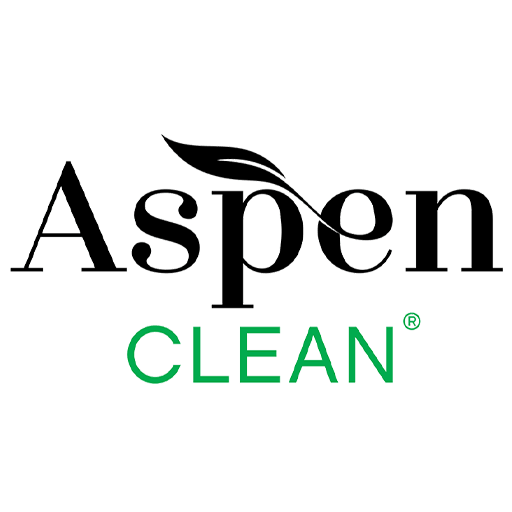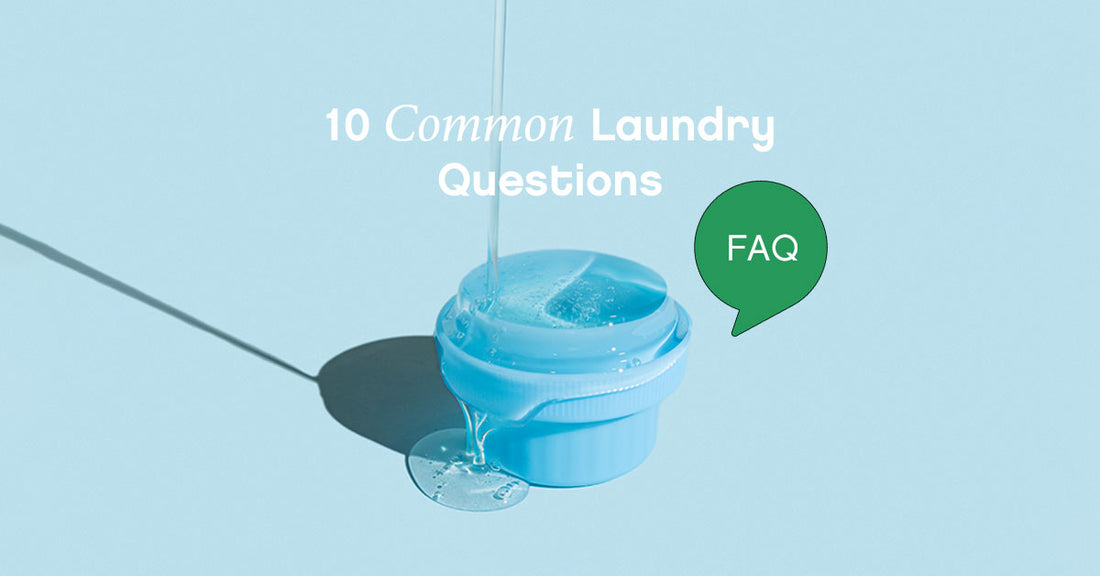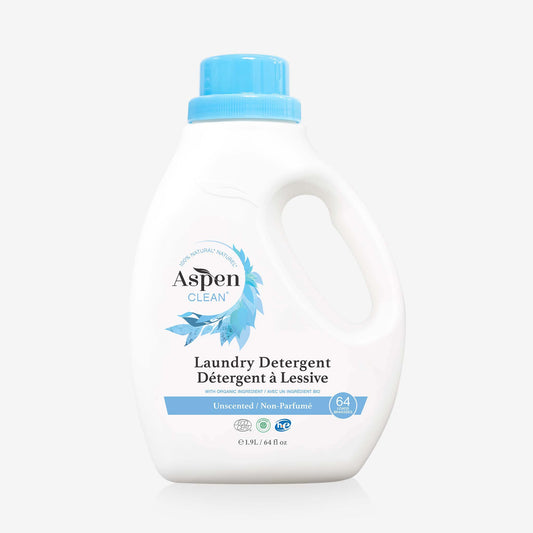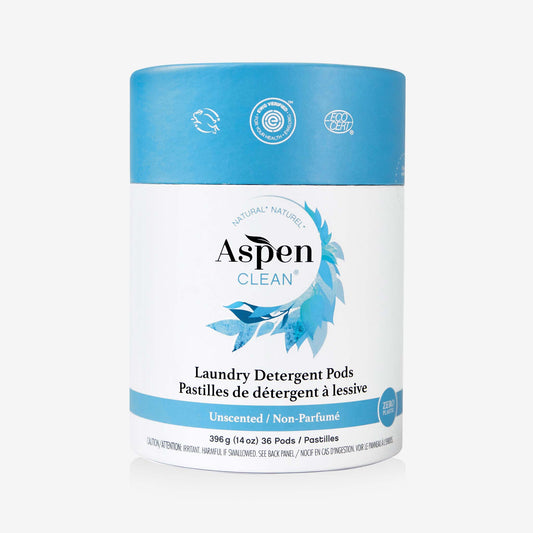You have laundry questions, we have answers!
Several years ago, we decided that there needed to be a better product for cleaning clothes. Something that didn’t use potentially harmful chemicals yet worked – getting your clothes clean while keeping them in great shape. Along the way, we learned a lot about laundry – A LOT. We had to so we could make the best eco-friendly laundry detergent for your family and ours. Now, we’re basically experts at all things laundry, so we’d like to share answers to our frequently asked laundry questions.
Q1: What are the most common laundry mistakes?
A: Don’t worry if you’ve made one of these mistakes, or more. It happens to all of us at some point, but these are a few of the most common laundry mistakes.
- Not sorting clothing properly
- Over-scrubbing stains
- Leaving shirts buttoned up and zippers unzipped in the wash
- Using too much detergent. See our article on how much laundry detergent to use in HE washer for directions
- Washing a “dry clean only” item
- Too much bleach or a bleach spill. Try using oxygen bleach - an alternative to toxic chlorine bleach
- Not using permanent press setting
- Not washing the washing machine
- Not cleaning the lint filter on the dryer
- Overdrying clothes (or drying clothes that shouldn’t be in the dryer)

Q2: Do I have to separate my clothes to do laundry?
A: We’re not going to tell you that you “must do” anything, but if you want your clothes to maintain their appearance and be cleaned properly, it’s a good idea to sort them.
Why? Because different colours and even types of material require different care. Most people have learned this the hard way at least once when a pair of white cotton underwear makes it into a load of dark or red clothes, and suddenly it turns pink or dingy looking. But it goes beyond dyes from clothing leaching onto other garments.
What to do instead: For the best results, your whites should be washed in hot water with the most detergent recommended and a bleach alternative. Clothes that use dark and bright dyes should be washed in cold water and with similar colours.
Wash delicate items separately on a gentle cycle, and sort clothes by fabric type to extend their lifespan. Care labels on clothing will give you more specific instructions.
Q3: Can you wash “dry clean only” clothes?
A: If a garment's label says "Dry Clean Only," we recommend not attempting to launder it at home. For "Dry Cleaning Recommended" or "For Best Results, Dry Clean" garments, you might be okay washing them yourself if care instructions are provided. Try a home dry cleaning kit, but be sure to follow the instructions to prevent damaging your clothing.
And if you need help to understand all the laundry symbols? We have gathered all the laundry symbols you need in this blog- “How To Read Laundry Symbols: A Guide to Laundry Care.”

Q4: How do you find the right laundry detergent?
A: When choosing a laundry detergent, it is important to check the ingredients list for fillers, fragrances, phosphates, and other toxic chemicals. Active ingredients like surfactants and enzymes are more effective and beneficial. If you have a High-Efficiency (HE) washing machine, make sure to look for HE laundry detergent, as using non-HE soaps can cause problems.
All AspenClean natural laundry detergent liquid, as well as laundry pods, are formulated for HE and regular washing machines and contain only the safest, most effective ingredients. And if you are still wondering how much HE laundry detergent you need to use in HE Washer? Or, which laundry detergent is better, laundry pods or liquid detergent? You can learn everything here by reading AspenClean blogs!
Q5: What are the steps to doing laundry?
A: To do laundry,
- Sort your clothes
- Pre-treat stains
- Use the right type and amount of detergent
- Choose the proper wash cycle and temperature
- Take care of your laundry as soon as it is done washing.
To dry clothes, determine how to dry each garment and hang or fold laundered clothing immediately.

Q6: How do you pre-treat laundry stains and odours?
A: Pre-treating refers to dealing with a stain or an odour before you wash the item. It’s the best approach because it is more effective, it fights dingy results, and some stains can get set in if they go through a hot drying cycle.
What to do: There are several different ways to pre-treat stains, and some of them can even be combined. Here are some options:
- Soak in cold water to loosen stains
- Rub a little detergent into the stain and let it sit, giving it time to lift the stain
- Use an enzyme-based detergent, like our laundry pods, to break up proteins and let that sit before washing
- Vinegar and baking soda are good old-fashioned pre-treaters that are also good at removing odours
- Oil, butter, and grease stains tend to respond well to dish soap that lifts away grease
- Commercial pre-treaters do work well, but they should be used only on tough stains
- If the odour is your primary concern, presoak clothing for 30 minutes in a 1:4 solution of white vinegar and water
- Odour can also be combated by adding ½ cup of baking soda to a sink full of water and letting your clothing soak for a half-hour
- Some people swear by adding ½ cup of white vinegar OR ½ cup of baking soda to their wash cycle
Q7: What do I need to know about my washing machine?
A: There are so many things to cover here, and each washing machine (and dryer) is different. We’ll hit on a few of the basics, but it really pays to look through the manual that came with your machine to make sure you’re familiar with it.
- Your machine has a wash cycle and a spin cycle; these speeds might be different, and they might be listed on your machine (fast/slow, fast/fast, etc.)
- A regular or normal cycle is the longest with the most agitation, and it’s designed to get out a lot of dirt. Both wash and spin may run fast, so this is best for durable clothing like cotton and linens.
- A permanent-press cycle is for synthetic fibres like rayon, polyester, and spandex. It uses a lot of agitation to clean the clothing but then slows down in the spin cycle because this clothing is more prone to developing wrinkles during the final cycle.
- The final cycle is delicate or gentle, and both go slowly to avoid too much agitation and to protect delicate fabrics.
- Some machines have more options, but those are the basic three.
- Machines have different capacity limits, so it’s good to understand your capacity. No matter the size, a medium load is about half full, and a large load is about three-quarters full. You can opt for an extra-large load, but if your clothing can’t move freely, then it won’t get clean.
- Your washing machine needs regular cleaning!
- Front-loading machines need to dry out between washes to prevent odours and mildew build-up.
Q8: How do I clean my washing machine? Is it really necessary?
A: Yes, it’s necessary to clean your washing machine. That said, every time you do a load in hot water, you’re washing it a little bit so it’s not going to get too grimy. Typically, running an empty load with hot water and a cup of distilled white vinegar monthly will sanitize the basin and remove lingering germs. Remember to leave your front-load washer’s door open so it can air dry. By the way, white vinegar is one of the best eco-cleaners, so you can also find other tips to learn how to clean with white vinegar here.
Once a year, you’ll need to do a more extensive cleaning of your washer and, using a 1:1 vinegar and water mixture or our All-Purpose Cleaner, spray the gaskets, dispensers and the exterior and wipe down with a clean cloth. Every three to five years, you should replace the hoses that connect your washer to water outlets.

Q9: Should I iron my clothing or steam it?
A: Both methods of removing wrinkles are valid, it just depends on the situation. A steamer is typically faster and takes less effort than ironing, which is why many people prefer it. Also, the steam tends to be gentler on your clothes.
Ironing is a better choice if the fabric shouldn’t get wet, like some silks and drapery fabrics. It’s also essential if you’re trying to put a crease in a garment. And, because they’re so good at putting creases in clothing, they’re also very good at removing stubborn wrinkles.
Q10: What is fabric softener, and do I need it?
A: Fabric softeners are a mixture of chemicals that coat your fabrics so they feel “slippery,” and the fibres stand up. It makes your garments feel soft and fluffy and reduces static cling. Most of them also add a fragrance to clothing. You should never use these fabric softeners on towels because that coating makes them less absorbent, meaning they stop doing what a towel is specifically designed to do.
Dryer balls are a safer alternative to fabric softeners because they encourage fibres to stand up and feel soft on their own, without adding any chemicals or potentially irritating fragrances.
Here’s a fact that most people don’t know – you don’t need any fabric softener (or even dryer balls) at all. If you’re using natural, gentle detergents and using the right amount of detergent for your load, you don’t need any type of fabric softener.
If you’d like to learn more about our products or keep getting tips on how to do your laundry and other cleaning hacks, check out our blog!





